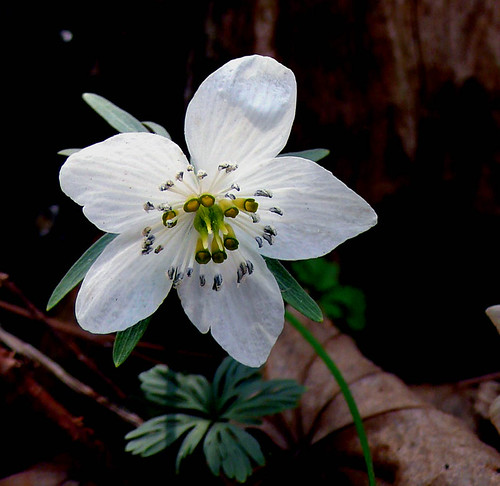Type: Korea, Chonbuk, Puan-gun, wet valley side along te path to Saebong in Mt. Naebyun, 100 m alt., 9 Mar. 1991. Kim, J. J. (Holotype: JNU, isotypes: JNU)
Distribution: Recorded at several localities in South Korea (100-200 m), but may probably also occur in at least southern North Korea.
A fairly new described species related to the Japanese Eranthis pinnatifida. It has large white flowers compound by broad overlapping sepals and funnel formed petals, not bifid as in Eranthis pinnatifida. The bracts of the involucre are linear and entire, not pinnatifid. Rhizome (tuber) globose.
Illustration: Byung Yun Sun et al: A New Species of Eranthis (Ranunculaceae) from Korea: E. byunsanensis. Korean Journal of Plant Taxonomy, Vol 23, No 1, p. 23.
A fairly new described species related to the Japanese Eranthis pinnatifida. It has large white flowers compound by broad overlapping sepals and funnel formed petals, not bifid as in Eranthis pinnatifida. The bracts of the involucre are linear and entire, not pinnatifid. Rhizome (tuber) globose.
This
species was described 1993 but is still considered doubtful, eg The Plant List (2012-12-03) there it is
recorded as synonym for Eranthis pinnatifida. I do not agree, if you see
both plants, or even pictures of them, the difference is obvious. Additionally extensive DNA proofing is now present.
In the year
of 2009 Eranthis pungdoensis B. U. Oh was described as a distinct
species from Eranthis byunsanensis. That species is also regarded as a
synonym, but this time rightly I think. Eranthis pungdoensis should have
funnel formed petals, much broader than E. byunsanensis and distribution
restrictred to Pung-do island.
With
respect to its low altitude it should be advisable to grow Eranthis byunsanensis protected from strong cold, as with Eranthis pinnatifida. It may be best suited
for an alpine house.
Funnel formed, cylindrical petals of Eranthis byunsanensis.


Inga kommentarer:
Skicka en kommentar